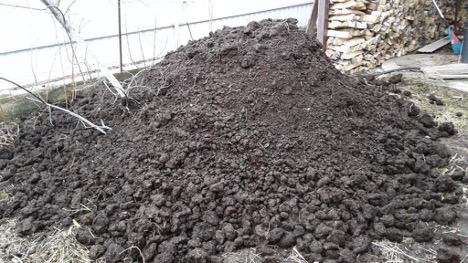Soil for a greenhouse: how to improve and restore the soil, treatment in the spring
The importance of choosing the optimal soil for your greenhouse cannot be underestimated if your goal is to maximize yield. The whole process in spring begins with the quality of the soil. After all, it serves as the basis for all crop production. Poor choice of soil can lead to degradation of the soil cover, negatively affect fertility and even lead to financial losses.

In this article we will look at which soil is best for a greenhouse, and also consider methods for healing and restoring the soil in the spring. We will analyze fundamental factors such as mineral composition, pH balance and organic matter that influence crop performance. This way, you can make informed financial and operational decisions to optimize your farming project.
The content of the article
- Is it necessary to change the soil in the greenhouse?
- How to improve soil in a greenhouse
- How to fertilize the soil in a greenhouse
- Replacing soil in a greenhouse
- How to improve soil in a greenhouse
- Tilling the soil in a greenhouse in spring
- How to prepare the soil in a greenhouse in spring
- How to renew the soil in a greenhouse
Is it necessary to change the soil in the greenhouse?
The condition of the soil directly affects the yield level and therefore the profitability of your greenhouse. Over time, even the best soil for indoor growing of crops is subject to depletion, accumulation of salts and deterioration of its properties.For these reasons, regularly replacing or improving the soil may be necessary to maintain optimal fertility levels. It also allows you to minimize economic risks.
How to improve soil in a greenhouse
For the successful cultivation of various crops, soil cultivation in a greenhouse is one of the key aspects. It directly affects the quality and quantity of the harvest and the economic efficiency of the project. There are a number of techniques and approaches to improve the structure, fertility and water permeability of the soil:
- The addition of organic matter is compost and humus, which are often stored on site in specialized pits.
- Checking and adjusting acidity levels.
- Optimizing soil alkalinity.
- Creation of an autonomous drainage system.
- Adding sand to clay soil can prevent waterlogging.
- Carrying out deep tillage of the soil to improve its structure.
Depending on the needs of your crop, using a balanced chemical fertilizer can be effective. But this requires strict adherence to recommendations and monitoring.
Regularly conducting soil tests for indoor crop cultivation to determine the deficiency or excess of certain elements allows you to adjust fertilization and care plans.

How to fertilize the soil in a greenhouse
To improve fertility, the following fertilizers are useful:
- compost, also known as humus. They are an excellent solution for enriching the soil with minerals and improving its structure.
- chemical fertilizers, most often nitrogen, phosphorus and potassium in various combinations, can quickly solve the problem of deficiency of certain elements.
Replacing soil in a greenhouse
The procedure for replacing soil can become an integral part of the annual chores. Especially if signs of depletion, decreased fertility or accumulation of harmful substances in the soil are noticed. How to change the soil in a greenhouse is a question that requires planning and the use of a certain technique.
The first step is to diagnose the current condition of the soil using analyzes and tests. Then it is necessary to remove the old soil, usually to a depth of 20-30 cm, observing all environmental regulations for disposal. This is followed by the preparation of a new layer of soil, which should be rich in minerals and organic matter and meet the needs of specific plants.
When choosing new soil, it is important to consider factors such as texture, fertility and pH balance. Before filling the greenhouse with new soil, it is recommended to disinfect it. This will destroy possible pests and pathogens.
How to improve soil in a greenhouse
One of the most important procedures for maintaining healthy soil in a greenhouse is disinfecting the soil in the greenhouse. This process rids the soil of various pests, pathogens and weeds. After all, they can negatively affect the harvest.
There are several methods of disinfection, including chemical, thermal and biological. Chemical methods often involve the use of fungicides or herbicides. But these products require strict adherence to instructions and may pose a risk to the environment. Thermal methods such as steam treatment are effective. But they can be expensive and require specialized equipment. Biological methods, including the use of biological products, are environmentally friendly.But they may be less effective at controlling certain types of pests or diseases.
Tilling the soil in a greenhouse in spring
How to restore soil in a greenhouse in the spring becomes a particularly pressing issue for farmers and agrarians. After the winter period, the soil often needs regeneration and enrichment. First of all, it is recommended to conduct a soil analysis to determine the pH level and the presence of necessary macro- and microelements. Based on the data obtained, you can select appropriate fertilizers. And don’t forget about digging and loosening. After all, they contribute to better oxygen access to the root system of plants.
In the context of how to improve the soil in a greenhouse, it is worth considering the use of organic fertilizers, such as compost or humus, as well as mineral complexes that will enrich the soil with the necessary elements.

How to prepare the soil in a greenhouse in spring
Spring soil preparation in a greenhouse is a key step in ensuring successful plant growth and development. One of the primary issues that needs to be resolved is which soil is best for a greenhouse. The ideal option is a soil that is balanced in composition, rich in organic and mineral substances. The texture of the soil also plays a significant role: it must be loose to ensure good water permeability and oxygen access to the plant roots. It is important to conduct a laboratory analysis of the soil to determine its chemical composition and, if necessary, correct it with fertilizers.
The second equally important aspect is the preparation of greenhouse soil for the sowing period. This includes a number of operations:
- primary tillage;
- digging;
- mandatory and shock disinfection to prevent the proliferation of pests and pathogens. It is carried out using organic matter and mineral fertilizers.
How to renew the soil in a greenhouse
Renewing soil in a greenhouse is central to managing plant fertility and health. What kind of land is needed for a greenhouse is one of the key questions in this process. The best option is a balanced soil, rich in mineral and organic substances, with good water permeability and a loose structure. To renew old soil, it is recommended to remove the top layer of exhausted soil and replace it with new, previously analyzed and prepared soil. This procedure not only increases fertility, but also minimizes the risk of disease and pests, which is the key to successful and profitable farming.





